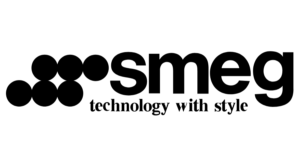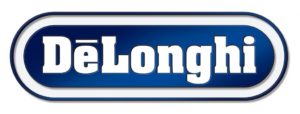But it can be less accurate than other more specific costing methods, such as FIFO and LIFO, because of the assumptions you make using it while blending your costs together. It makes costing easy to track, because you don’t need to pay attention to which batch a unit was sold from. If you have products with different markups (and you most certainly do) you won’t get an accurate picture of your inventory’s cost. These items should also be kept separate from your finished goods’ inventory hierarchy.
Calculate the Cost of Goods Sold
- Scanner enables you to quickly and accurately count inventory items by scanning their barcodes, automating the stock counting process and reducing the likelihood of errors.
- We’ve mentioned the importance of counting inventory a few times in this guide—and that’s because we can’t emphasize it enough.
- If you do deal with work in progress inventory, your goal should be to ensure items don’t stay at this stage for long.
- To manage and reduce this type of inventory, you can create season codes with style numbers when you enter the items into your inventory management system.
- The Retail Inventory Method can be a fairly simple way for retailers to estimate their inventory balance and cost of goods sold, especially small businesses without a complex inventory system.
Businesses often face the challenge of keeping their inventory values in line with ever-changing market prices. The retail inventory method addresses this issue by using current retail prices, providing a reasonably accurate reflection of market conditions. This can be especially useful in industries where prices fluctuate frequently. The top retail inventory management software depends on your unique needs. Some of the best retail POS systems include integrated features that will deduct inventory as sales and returns are made.
Inventory Management
You’ll be able to check what categories and products are performing well—and which aren’t—at a glance. Setting your reorder points means you need to spend less time trying to manually monitor what needs to be reordered for every purchase period. “The stocktake process for us used to involve a lot of spreadsheets, and this wasn’t ideal because it leads to mistakes. Now with Lightspeed, people can use devices to scan easily and update the stock record,” says Paul Stephens, Head of Data & Technology, Neal’s Yard Remedies. You might want to consider doing regular spot checks on your high-risk inventory, such as low-cost accessories that aren’t locked behind a case. It’s best to do them when your SKU levels are lowest, typically during the last weekend in January or the end of July.
It leads to more effective inventory management
- In this guide, we’ll go over what the retail inventory method is, how to use it, and why it can be beneficial to your business.
- You can more accurately predict demand, so you have a better picture of the ROI of your inventory.
- The retail inventory method is an accounting strategy for approximating the ending value of your store’s inventory, i.e., the value of the inventory remaining at the end of your accounting period.
- Once these areas are identified, appropriate preventative measures can be put in place.
Its main purpose is to help business owners gauge their company’s performance and needs from month to month. If counting by hand, performing a physical inventory count of your merchandise can be time-consuming and even expensive, as it could mean shutting down the store to get an accurate count. Because the retail inventory method is so easy to use, it also has fewer labor requirements than other accounting techniques.
The https://pamela-green.com/solo-1958-1968/ (RIM) helps retailers estimate the value of their merchandise. More specifically, the retail inventory method calculates your ending inventory balance. It does this by measuring the cost of your inventory relative to its retail price. Now it’s time to calculate your cost-to-retail percentage, which can be found by dividing the cost of goods sold by retail price. Based on your POS reports, the average cost of goods sold for a pair of jeans in your store is $20. These retail analytics reports also inform you that the average retail price at which you sell jeans at your shop is $80.
What are inventory management processes?
This frees up hours in the workday, so your team can focus on customer relationships or even new product planning. Plus, you can save quite a bit of money when your team isn’t working days on end trying to generate a physical inventory count. The WAC method swoops in to simplify your inventory accounting and reveal the average cost of each SKU. This will play into both your http://www.moyavto.com/news/11289-voditelya-v-ssha-uvolili-iz-za-silnogo-russkogo-akcenta.html cost-to-retail ratio and cost of goods available for sale. Because the last units purchased are sold first, your ending inventory valuation would be based on the cost of your oldest units. To calculate ending inventory using the retail method, subtract the total sales at retail price and the cost of goods sold at retail price from the beginning inventory at retail price.
Count your inventory
- Accurately accounting for all of that precious stock is a crucial task for any sized business—but this is also one of the most daunting accounting challenges facing all retailers.
- Although there are many ways you can determine and track the value of your inventory, the retail inventory method is among the most common techniques used today.
- Because the last units purchased are sold first, your ending inventory valuation would be based on the cost of your oldest units.
- Also, the cost of merchandise in your warehouse is usually consistent—there are no sales or price cuts like you have in-store—which leads to more accurate results with the RIM calculation.
- It then multiplies the result by an average cost-to-retail percentage (or the cost complement percentage) to generate the ending-inventory value.
If you have inventory in your store that you’re working to update, repair or tune up for customers, that should be classified separately from work in progress goods. If you have raw materials in your inventory, you’ll want to keep them separate from your finished goods’ inventory hierarchy. Goods that might be considered raw materials—lumber, for example—that you have in stock http://ynks.net/news/news_188.html because you intend to sell them to customers are technically finished goods. If you’re a retailer who operates a warehouse, you’re going to need to approach your warehouse inventory differently than you do your in-store inventory. Instantly see what’s in stock, what’s on order, where each item is located, and what it’s all worth so you can make fast, informed decisions.
Inventory management examples
This inventory accounting method is a shortcut to estimating your stock’s value. The retail inventory method should only be used when there is a clear relationship between the price at which merchandise is purchased from a wholesaler and the price at which it is sold to customers. This is done by dividing the total cost of goods for sale by the total units available. This method can benefit businesses with many inventory items or frequent price changes, as it smooths out price fluctuations over time and provides a stable average cost per unit.





